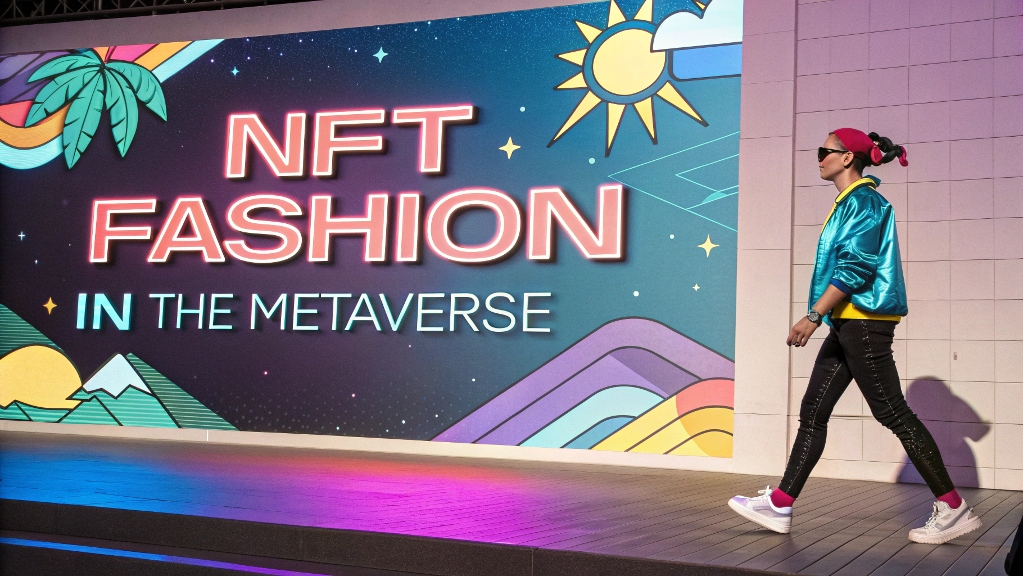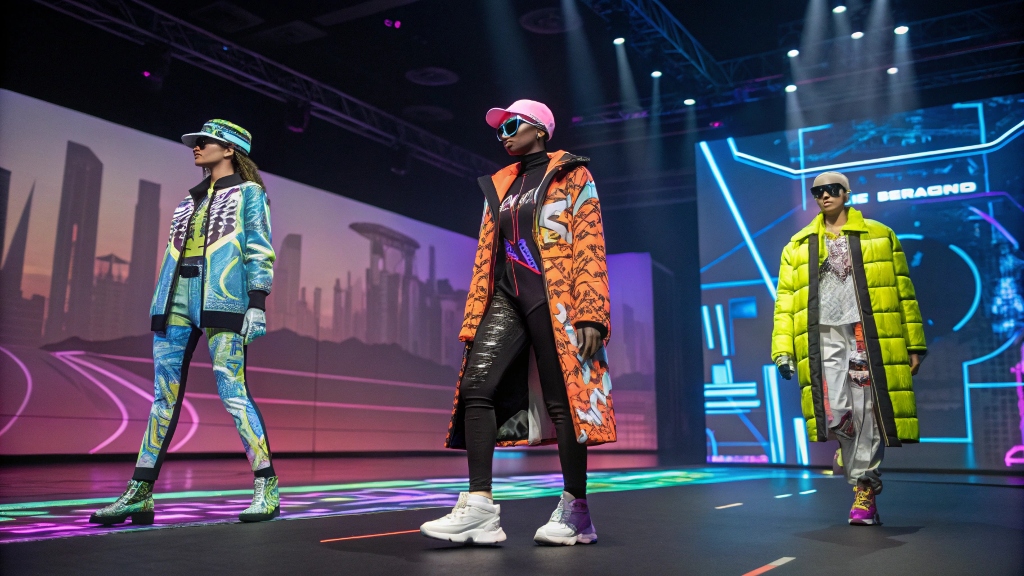The metaverse, a collective virtual shared space, has emerged as a transformative frontier for industries, with fashion taking a bold leap into this digital realm. At the heart of this evolution lies NFT fashion, where non-fungible tokens (NFTs) redefine how fashion is created, owned, and experienced in virtual environments. This article delves into the intricate world of NFT fashion in the metaverse, exploring its history, current state, key concepts, benefits, challenges, and future trends, enriched with real-time insights, a review, FAQs, and conclusions.
History of NFT Fashion in the Metaverse
Early Beginnings (Pre-2020)
The concept of digital fashion predates the mainstream metaverse buzz, rooted in virtual worlds like Second Life (2003), where users customized avatars with digital clothing. However, the integration of NFTs into fashion began with the rise of blockchain technology.
-
Blockchain Foundations: The Ethereum blockchain introduced the ERC-721 standard in 2017, enabling unique digital assets (NFTs). Early NFT projects like CryptoKitties laid the groundwork for digital collectibles.
-
Digital Art Influence: By 2018, digital art NFTs gained traction, inspiring fashion creators to explore virtual garments as unique assets.
Mainstream Adoption (2020–2022)
The COVID-19 pandemic accelerated digitalization, pushing fashion brands into virtual spaces as physical runways closed. The term “metaverse,” popularized by Neal Stephenson’s 1992 novel Snow Crash, became a buzzword after Facebook’s rebranding to Meta in 2021.
-
Pioneering Brands:
-
Nike and RTFKT: Nike acquired RTFKT Studios in 2021, launching NFT-based sneakers like the Nike Dunk Genesis Cryptokicks, customizable via blockchain-tracked “Skin Vials.”
-
Gucci: Gucci entered the metaverse with Gucci Vault Land in The Sandbox (2022) and collaborated with Superplastic for SUPERGUCCI NFTs, blending physical and digital collectibles.
-
-
Metaverse Fashion Week: Decentraland’s inaugural Metaverse Fashion Week in March 2022, featuring brands like Dolce & Gabbana and Hugo Boss, marked a milestone, showcasing NFT-based runway looks.
Recent Developments (2023–2025)
By 2025, NFT fashion has matured, with luxury and sportswear brands leading the charge. The global fashion metaverse market, valued at $7.1 billion in 2023, is projected to reach $89.6 billion by 2032, growing at a 33% CAGR.
-
Phygital Integration: Brands like Dior and Chanel have embraced “phygital” products (physical items with digital NFT twins), enhancing authenticity and consumer engagement.
-
Market Corrections: The NFT market faced a downturn in 2022–2023, with average token prices dropping 92% from $3,894 to $293, but renewed interest in utility-driven NFTs has spurred recovery.
Current State of NFT Fashion in the Metaverse
Market Overview
NFT fashion thrives in platforms like Decentraland, The Sandbox, and Roblox, where users purchase and wear digital garments for avatars. As of 2024, 21 of the top 50 global fashion brands have launched NFTs, with sportswear brands dominating.
-
Key Platforms:
-
Decentraland: Hosts virtual stores and events, with 300,000 monthly active users.
-
The Sandbox: Features brand-specific experiences like Gucci Vault Land.
-
Roblox: Attracts younger audiences, with 19 million visitors to Gucci’s virtual garden.
-
Notable Examples
-
Dior’s B33 Sneaker: Combines physical sneakers with NFT-based digital twins for exclusive virtual experiences.
-
Louis Vuitton’s Louis The Game: A video game with collectible NFTs tracing the brand’s history, non-tradeable to emphasize exclusivity.
-
DressX: A digital-only fashion brand offering sustainable virtual collections for avatars.
Consumer Engagement
Consumers value interactivity, with 62% seeking interactive online activities and 60% desiring member-exclusive content. Blockchain-based authentication, like Chanel’s NFC microchips, enhances trust.
Key Concepts of NFT Fashion in the Metaverse
Non-Fungible Tokens (NFTs)
NFTs are unique digital assets on a blockchain, ensuring authenticity and ownership. In fashion, they represent virtual garments, accessories, or phygital items.
-
Blockchain Verification: Smart contracts on Ethereum or other blockchains track ownership and transactions, preventing counterfeiting.
-
Interoperability Challenges: NFTs are often platform-specific, limiting their use across metaverses.
Virtual Fashion
Virtual fashion includes digital garments designed for avatars, created using 3D software (e.g., CLO3D, Blender) or AI. These garments defy physical constraints, enabling experimental designs.
-
Design Tools: Tools like Gravity Sketch allow physics-defying creations, such as glowing or animated fabrics.
-
Hyper-Personalization: AI-driven personalization tailors designs to user preferences, enhancing engagement.
Phygital Products
Phygital items combine physical products with digital NFTs, bridging real and virtual worlds.
-
Examples:
-
Azuki x Ambush: Uses physical-backed tokens (PBTs) with scannable chips for authenticity.
-
Maison Margiela’s MetaTABI Boots: Digital boots with physical counterparts.
-
Digital Ownership
NFTs enable true ownership of digital assets, unlike traditional in-game purchases, fostering a sense of value and exclusivity.
Benefits of NFT Fashion in the Metaverse
Sustainability
Virtual fashion reduces environmental impact by eliminating physical production and waste.
-
Eco-Friendly: No material resources or shipping, addressing the fashion industry’s contribution to biodiversity loss and climate change.
-
Scalability: Digital collections can be produced instantly, minimizing overproduction.
Creative Freedom
The metaverse removes physical limitations, allowing designers to experiment with fantastical designs.
-
Unbounded Creativity: Examples include Scarlett Yang’s ethereal digital garments and RTFKT’s animated sneakers.
-
Accessibility: Virtual fashion caters to diverse body types and preferences.
Consumer Engagement
NFT fashion fosters deeper connections through exclusivity and community.
-
Exclusive Experiences: Token-gated events and member-only content enhance brand loyalty.
-
Resale Value: NFTs can be resold on platforms like OpenSea, with creators earning royalties via smart contracts.
Economic Opportunities
The metaverse fashion market offers new revenue streams.
-
Virtual Commerce: Brands sell digital wearables and host virtual events, tapping into a $47.48 billion market (2022).
-
Creator Economy: Independent designers leverage platforms like Decentraland to reach global audiences.
Challenges of NFT Fashion in the Metaverse
Technical Limitations
Current metaverse platforms struggle with rendering high-quality designs.
-
Low-Resolution Graphics: Platforms like Decentraland prioritize speed, resulting in “angular” designs resembling The Sims.
-
Accessibility: High costs of VR headsets and quality internet (e.g., 5G) limit adoption.
Legal and Ethical Issues
The metaverse poses unique legal challenges.
-
Intellectual Property (IP): Digital fashion faces rapid reproduction risks, with unclear copyright protections for NFTs.
-
Data Privacy: Blockchain’s immutability raises concerns about permanent data storage.
Market Volatility
The NFT market’s volatility affects consumer confidence.
-
Price Fluctuations: The 2022–2023 NFT market crash saw an 83% drop in floor prices.
-
Speculative Risks: Hype-driven investments led to scams, like counterfeit NFTs costing collectors millions.
Interoperability
Lack of standardization hinders NFT portability across platforms.
-
Platform Silos: An NFT bought in Decentraland may not work in Roblox, frustrating users.
-
Development Needs: Consistent virtual environments require collaboration between brands and developers.
Future Trends in NFT Fashion in the Metaverse
AI and AR Integration
Artificial intelligence and augmented reality will enhance NFT fashion experiences.
-
AI-Driven Design: AI tools will enable real-time customization, predicting trends based on consumer data.
-
AR Try-Ons: Apps like IKEA’s AR furniture visualizer inspire fashion brands to offer virtual try-ons.
Interoperable Metaverses
Efforts to standardize NFT protocols will improve cross-platform compatibility.
-
Web3 Initiatives: Projects like The Metaverse Society aim for decentralized, open metaverses.
-
Unified Standards: Emerging protocols may allow NFTs to transfer seamlessly between platforms.
Mainstream Adoption
As infrastructure improves, NFT fashion will reach broader audiences.
-
5G and Hardware: Affordable VR devices and faster internet will democratize access.
-
Celebrity Influence: Celebrities like Snoop Dogg joining platforms like TON signal growing cultural acceptance.
Phygital Expansion
Phygital products will dominate, blending real-world utility with digital exclusivity.
-
Authentication: Blockchain-backed chips will combat counterfeiting, as seen with Chanel’s NFC microchips.
-
Luxury Focus: Brands like Gucci will expand phygital offerings to target Gen Z.
Table: Comparison of Key Metaverse Platforms for NFT Fashion
|
Platform |
Monthly Active Users |
Key Fashion Brands |
Strengths |
Weaknesses |
|---|---|---|---|---|
|
Decentraland |
300,000 |
Dolce & Gabbana, Hugo Boss |
NFT-based commerce, virtual events |
Low-resolution graphics |
|
The Sandbox |
Not disclosed |
Gucci, Adidas |
Brand-specific experiences |
Limited interoperability |
|
Roblox |
70 million (overall) |
Ralph Lauren, Nike |
Large young audience, gaming focus |
Limited NFT integration |
Review: The Impact of NFT Fashion
NFT fashion has redefined creativity and commerce in the metaverse, offering sustainable, innovative alternatives to physical fashion. Brands like Nike and Gucci have set benchmarks, leveraging NFTs to engage tech-savvy consumers. However, challenges like technical limitations and market volatility highlight the need for robust infrastructure and legal frameworks. The projected growth to $89.6 billion by 2032 underscores its potential, but success hinges on addressing interoperability and accessibility. For knowledgeable readers, the focus on phygital products and AI-driven personalization signals a shift toward hybrid fashion ecosystems, where blockchain ensures authenticity and consumer trust.
FAQs
1. What makes NFT fashion different from traditional digital fashion?
NFT fashion uses blockchain to ensure unique ownership and authenticity, unlike traditional digital fashion, which lacks verifiable ownership and is often platform-locked.
2. How do brands benefit from NFT fashion in the metaverse?
Brands gain new revenue streams, enhance consumer engagement through exclusive experiences, and reduce environmental impact by focusing on virtual designs.
3. Why is interoperability a challenge for NFT fashion?
NFTs are often tied to specific platforms, limiting their use across different metaverses due to a lack of standardized protocols.
4. Are NFT fashion items a good investment?
While some NFTs offer resale value, the market’s volatility and speculative nature pose risks. Utility-driven NFTs (e.g., phygital items) are safer bets.
5. How does NFT fashion contribute to sustainability?
Virtual fashion eliminates physical production, reducing waste and resource use, aligning with eco-conscious consumer demands.
Read More Also: Madonna Iconic Outfits That You Can Wear
Conclusions
NFT fashion in the metaverse represents a paradigm shift, blending technology, creativity, and sustainability. From its roots in early virtual worlds to a projected $89.6 billion market by 2032, it has evolved into a dynamic ecosystem driven by blockchain and consumer demand for digital ownership. While benefits like creative freedom and sustainability are compelling, challenges such as technical limitations, legal ambiguities, and market volatility require attention. Future trends, including AI integration and interoperable metaverses, promise to make NFT fashion more accessible and impactful. For brands, designers, and consumers, embracing this digital frontier offers unprecedented opportunities to redefine fashion in a virtual age.




